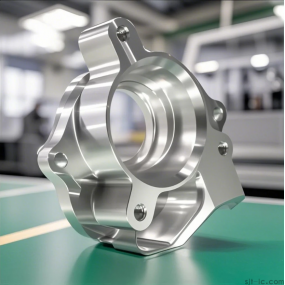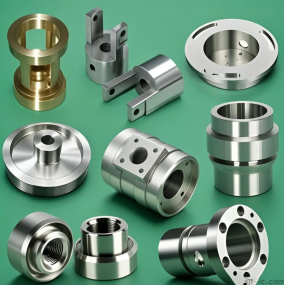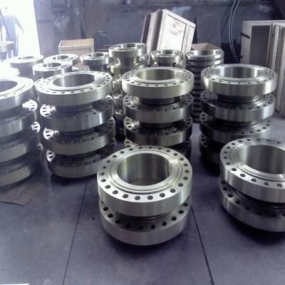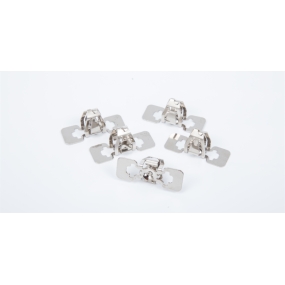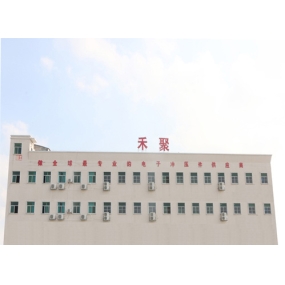A flange, also known as a flange, is a general term that usually refers to several fixed holes around a metal body resembling a disk for connecting other things. It is widely used in machinery. Because it looks all sorts of strange, it is called a flange, and its name comes from the English word 'flange'.
Flange, also known as flange or flange. The parts that connect pipes to each other are connected to the ends of the pipes. There are holes on the flange, and bolts tightly connect the two flanges. Seal the flanges with gaskets. Flanges are a type of disc-shaped component, most commonly used in pipeline engineering, and are typically paired together. In pipeline engineering, flanges are mainly used for connecting pipelines. At the end where two pipelines need to be connected, install a flange on each end. For low-pressure pipelines, threaded flanges can be used, and for pressures above 4 kilograms, welded flanges can be used. Add a sealing gasket between the two flanges and tighten them with bolts.
Flanges with different pressures have different thicknesses and use different bolts.
When connecting water pumps and valves to pipelines, the corresponding flange shapes are also made for the parts of these equipment, also known as flange connections.
Any connecting component that uses bolts to connect two planes and enclose them at the same time is generally referred to as "ldquo; Fran”, As for the connection of ventilation ducts, this type of component can be referred to as“ Flange parts;.
Threaded flange is a type of flange. The threaded flange connection structure is a composite component consisting of a pair of flanges, several bolts, nuts, and a gasket.
Flange, also known as flange or flange.
The parts that connect pipes to each other are connected to the ends of the pipes. There are holes on the flange, and bolts tightly connect the two flanges. Seal the flanges with gaskets. Flanged pipe fittings refer to fittings with flanges (flanges or flanges). It can be made by casting (not shown in the picture), or by threaded connection or welding. A flange joint consists of a pair of flanges, a gasket, and several bolts and nuts. The gasket is placed between the two flange sealing surfaces. After tightening the nut, the pressure on the gasket surface reaches a certain value and deforms, filling the uneven areas on the sealing surface to ensure a tight and leak free connection. Flange connection is a detachable connection. According to the connected components, it can be divided into container flanges and pipe flanges. According to structural types, there are integral flanges, loose flanges, and threaded flanges. Common integral flanges include flat welding flanges and butt welding flanges. Flat welding flanges have poor rigidity and are suitable for pressure applications; In the case of 4MPa; Welding flanges, also known as high neck flanges, have high rigidity and are suitable for applications with high pressure and temperature. There are three types of flange sealing surfaces: flat sealing surfaces, suitable for situations with low pressure and non-toxic media; Concave convex sealing surface, suitable for situations with slightly higher pressure; Mortise and tenon sealing surface, suitable for flammable, explosive, toxic media and high-pressure environments. A gasket is a circular ring made of a material that can undergo plastic deformation and has a certain strength. Most gaskets are cut from non-metallic plates or made by professional factories according to specified sizes, and their materials include asbestos rubber sheets, asbestos sheets, polyethylene sheets, etc; Metal gaskets made by wrapping non-metallic materials such as asbestos with thin metal plates (such as white iron sheet and stainless steel) are also used; There is also a wrapped gasket made by winding thin steel strips and asbestos strips together. Ordinary rubber gaskets are suitable for situations where the temperature is below 120 ℃; Asbestos rubber gasket is suitable for situations where the temperature of water vapor is below 450 ℃, the temperature of oil is below 350 ℃, and the pressure is below 5MPa. For general corrosive media, acid resistant asbestos board is the most commonly used. In high-voltage equipment and pipelines, lens shaped or other shaped metal gaskets made of copper, aluminum, No. 10 steel, stainless steel are used. The contact width between the high-pressure gasket and the sealing surface is very narrow (line contact), and the machining smoothness of the sealing surface and gasket is high.
Flanges are divided into threaded connection (threaded connection) flanges, welded flanges, and sleeve flanges. Low pressure small diameter flanges have threaded flanges and sleeve flanges, while high pressure and low pressure large diameter flanges use welded flanges. The thickness of flange plates and the diameter and quantity of connecting bolts vary for different pressures.
According to different levels of pressure, flange gaskets are made of different materials, ranging from low-pressure asbestos gaskets, high-pressure asbestos gaskets to metal gaskets. 1. Divide carbon steel, cast steel, alloy steel, stainless steel, copper, aluminum alloy, plastic, argon chromium plating, PPR, etc. by material. 2. Divided by production methods, it can be divided into forged flanges, cast flanges, spliced flanges, cut flanges, and rolled flanges (super large models). 3. Divided by manufacturing standards, it can be divided into national standards (Ministry of Chemical Industry standards, petroleum standards, power standards, Ministry of Machinery standards, marine standards), American standards, German standards, Japanese standards, Russian standards, etc.


 Spanish
Spanish Arabic
Arabic French
French Portuguese
Portuguese Belarusian
Belarusian Japanese
Japanese Russian
Russian Malay
Malay Icelandic
Icelandic Bulgarian
Bulgarian Azerbaijani
Azerbaijani Estonian
Estonian Irish
Irish Polish
Polish Persian
Persian Boolean
Boolean Danish
Danish German
German Filipino
Filipino Finnish
Finnish Korean
Korean Dutch
Dutch Galician
Galician Catalan
Catalan Czech
Czech Croatian
Croatian Latin
Latin Latvian
Latvian Romanian
Romanian Maltese
Maltese Macedonian
Macedonian Norwegian
Norwegian Swedish
Swedish Serbian
Serbian Slovak
Slovak Slovenian
Slovenian Swahili
Swahili Thai
Thai Turkish
Turkish Welsh
Welsh Urdu
Urdu Ukrainian
Ukrainian Greek
Greek Hungarian
Hungarian Italian
Italian Yiddish
Yiddish Indonesian
Indonesian Vietnamese
Vietnamese Haitian Creole
Haitian Creole Spanish Basque
Spanish Basque

